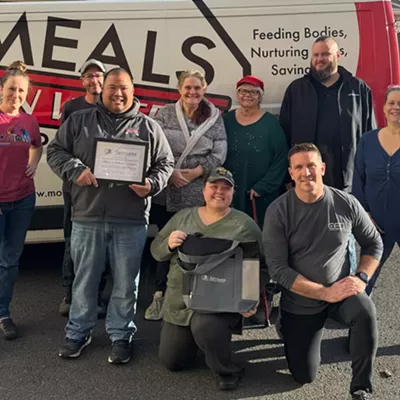In learning he needed heart surgery last spring, Larry Shaw’s first question was: How much? The surgeon’s fee, between $1,500 and $2,000, was within Shaw’s means as a self-insured businessman. But the angioplasty, including placement of a thin tube in a clogged artery, would require a one-night hospital stay. He called the closest major medical center to his Dallas home. Estimated charge: $47,000, not including anesthesia.
Shaw’s next calls were to Thailand and India.
The price at Bangkok’s private Bumrungrad International Hospital: $6,400, including a two-night stay, surgeon’s fees, anesthesiologist and drugs. The Apollo hospital in New Delhi: $4,600.
A few weeks later, in late June, Shaw and his wife, Kathy, are more than 9,000 miles from home, walking the marble floors of a Bangkok hospital lobby that looks like the entrance to a newly renovated Hilton. Shaw, by economic necessity, is joining an ever-growing trend: medical travel, sometimes referred to as medical tourism.
The reputation of outstanding U.S. hospitals has long drawn wealthy patients from around the world. But today, traffic also heads in the opposite direction. It’s a trend that quietly has been expanding well beyond facelifts, tummy tucks and dental crowns to embrace all sorts of non-emergency treatments.
Most American patients are seeking significantly lower prices. But some go abroad for treatments not yet available or not yet widely practiced in the United States. Others head overseas for the personalized service emphasized by high-end private hospitals working to appeal to an international clientele.
“There is a fierce battle for medical tourists, who are the highest-value tourists in terms of how long they stay and money spent,” says Ruben Toral, marketing director of Bumrungrad Hospital. “Governments in Southeast Asia and now in Dubai view it as an extension of regular tourism.”
While Singapore and India also have a strong network of hospitals drawing foreign tourists, as does Malaysia, other parts of Asia rushing to develop medical tourism: South Korea, Taiwan and the Philippines. Brazil, Costa Rica and Mexico also attract Americans seeking cosmetic surgery or dentistry, but “the infrastructure isn’t in place for extensive, invasive procedures,” says Josef Woodman, author of a how-to guide called Patients Beyond Borders: Everybody’s Guide to Affordable, World-Class Medical Tourism.
A medical tourist, as opposed to a medical traveler, will use some of his or her savings on medical care to enjoy a holiday abroad. Take Dana Updyke, 62, of Los Angeles, who was recently on a ferry between Phuket and the Phi Phi Islands. She had come to Thailand several weeks earlier for a hip resurfacing, a less-invasive alternative to a hip replacement that is not yet widely practiced in the United States. After recuperating in a five-star hotel on the beach, a stone’s throw from a satellite hospital Bumrungrad operates in Phuket, she was ready to move from one Thai tourist destination to an even more exotic one.
Some international hospitals broker deals with resorts. The Apollo Chennai in India, for example, staffs the ritzy Taj Fisherman’s Cove on the Bay of Bengal with an intern and nurses prepared to do routine follow-up care.
Shaw is more a medical traveler than a medical tourist. On this trip, he’s focused purely on surviving heart surgery that he can afford.
Choosing Bangkok
Shaw and his wife arrive at Bangkok’s new international airport in the wee hours of a morning last summer. They don’t hassle with logistics: The hospital sends a greeter to speed them through customs, and a driver takes them to a spartan apartment building next to the hospital.
Some patients stay in the upscale hotels in the downtown area; Shaw has opted for a $50-a-night room with a kitchen in a hospital-owned building. We meet the next morning, when he first sees the hospital and doctor to whom he is entrusting his care.
Shaw, 59, looks relatively fit and healthy, except for a bluish tint to his lips. At 5 feet 10 inches tall and 190 pounds, he’s stocky, with a full head of dark hair. Outgoing and talkative, Shaw seems particularly energetic, a true Type-A personality.
After suffering several times last spring from what seemed to be extreme indigestion, Shaw saw a Dallas cardiologist. Tests revealed that one of the arteries of his heart was 90 percent blocked; 70 percent of the other two coronary arteries were blocked. The cardiologist recommended the highly esteemed Baylor University Medical Center in Dallas for his angioplasty, a critical but not emergency surgery.
Sticker shock hit. Shaw, who owns patents on retaining walls that he travels the world to market, immediately thought of Asia. He settled on Bumrungrad after talking with Dallas friends who were working as missionaries in Thai prisons. One, a nurse, raved about Bumrungrad.
We arrive outside the hospital, near the Queen Sirikit National Convention Center, to find hospital valets parking cars and hailing taxis. Inside, beneath a soaring ceiling ringed by a second-story balcony, plush upholstered chairs are grouped around carpets on the marble floors. A Starbucks sits in one corner, computers for public use in another.
On the balcony, an upscale Japanese restaurant sits next to Au Bon Pain and McDonald’s. On the next floor is the International Patient Registration Center, which includes a travel agency, a visa center and registration desks with translators fluent in 13 languages.
One indicator of the types of patients Bumrungrad targets: a sign advertising the services of “Dr. Golf,” an orthopedic doctor who specializes in golf injuries. (Dr. Golf offers free written advice, in English or Japanese, at www.thaigolfer.com.)
The facilities add to a sense of confidence but don’t surprise the well-traveled Shaw. They would shock a lot of friends and neighbors, he says.
“When I told people I was having surgery in Southeast Asia, some looked at me like I was crazy. They were clearly imagining me in a straw hut with someone holding fishing line and tweezers.”
Although Shaw’s operation is fairly routine, risks include kidney failure, heart attack and stroke. A stent — a thin tube that props open closed arteries — can puncture the heart, damage an artery or dislodge a blood clot or fatty tissue. Not something to entrust to just any surgeon. Malpractice suits in Thailand do not allow for punitive damages. (American patients must agree beforehand to settle any disputes within Thai jurisdiction.)
Experts’ Takes
The American Heart Association has no official position or warnings regarding medical travel, spokeswoman Cathy Lewis said. Same for the American College of Cardiology. Asked to comment, the American Medical Association offered a prepared statement that patients should be “confident in the qualifications” of health care professionals and “the safety standards of the hospital or clinic.” Patients going abroad for care should be sure they have a plan for proper follow-up after coming home, the AMA adds.
The American Society of Plastic Surgeons is much less sanguine. “Cosmetic surgery is still surgery. Surgery is serious and not the place to look for bargains,” says surgeon Richard A. D’Amico, president-elect of the society. “It’s difficult enough to verify physicians’ training and the standards of the facilities here in the States. In a foreign country it might be nearly impossible.”
Patients should also know that they are more prone to blood clots after surgery, and “the last thing you should do after surgery is [take] a long plane ride,” D’Amico said. Finally, “if a patient has complications and needs a plastic surgeon here to clean up a mess and save them, they’re undertaking additional costs with a new surgeon. It’s false economics.”
Shaw says he found comfort in knowing that Bumrungrad is accredited by the Joint Commission International, an Illinois-based nonprofit group that has accredited 4,500 hospitals in the United States and 135 overseas.
Details about the training of Bumrungrad’s more than 900 physicians are on its Website (www.bumrungrad.com). More than 200 of the hospital’s doctors, it says, have trained overseas, mostly in the United States, England and Australia. Some are U.S.-board-certified in various specialties.
Shaw says he called Bumrungrad and asked to speak to their best cardiologist experienced in angioplasty and stents. His call was transferred to Sureerat Panyarachun, who trained in Melbourne and noted that she had performed 1,500 similar surgeries. He had a doctor.
In Bangkok, one day after his arrival, Shaw registers at the hospital. At Shaw’s presurgical consultation, Dr. Sureerat, as she prefers to be called, reviews the 3-D pictures of his heart that were taken in Dallas and e-mailed to Thailand. She answers his questions and orders tests. It’s exactly what you’d expect in the States, only the surgeon sees him within moments of his arrival and spends more than an hour talking with him, seemingly in no rush.
Shaw goes off for basic tests before his surgery, scheduled for the next morning. In a nearby area, a 72-year-old Arizona man who came to Thailand for vacation is awaiting an appointment. While in Bangkok, he heard about the hospital. He dropped in to arrange a long-overdue physical and got one the same day. The verdict: Time to get his cataracts removed. He was so happy with the outcome and price — $300 — that he has carved out more time on this trip for a facelift. No way he’ll let his name be printed. “My buddies back home would laugh me off the face of the Earth.”
Apparently he believes they’ll chalk up his new younger look to rest and relaxation.
A Helping Hand
Julie Munro, 59, is a pioneer in an emerging profession: medical concierge, or medical travel planner. A Scottsdale, Ariz., resident who spends most of her time in Bangkok these days, Munro is a combination travel agent, health consultant and hand holder. American patients considering a medical procedure in Thailand or Singapore find her by word of mouth or on the Web (www.cosmeticsurgerytravel.com). She and her staff recommend doctors, book travel, lend cellphones and accompany patients to appointments and surgeries.
“It’s naive to think you can walk into a foreign environment and all will be well,” Munro says. “You want the best surgeon, even if it costs a little more than one down the street. If it’s plastic surgery, you should go for the equivalent of a Beverly Hills surgeon but still at a Bronx price.”
She notes that at the Bangkok Hospital Medical Center, a long walk or short cab ride from Bumrungrad, personnel are frantically preparing for a visit from the Joint Commission International, one of the steps in seeking accreditation. The medical center is campuslike, with separate buildings for a hospital that caters exclusively to foreign patients, a heart hospital where innovative heart stem cell research is conducted, a cancer hospital, a general hospital and an orthopedic center. Turns out the JCI was satisfied, and accreditation was awarded.
Samitivej Hospital Sukhumvit, in the same general neighborhood, is smaller and more intimate and received accreditation last January. Cathedral-style windows frame the lobby, where a musical ensemble plays on weekends. There is a small tropical garden. Patients’ rooms all have balconies.
The hospital’s “fusion food bistro” includes Thai, Japanese, Middle Eastern and Western dishes, and it all looks delicious.
Don’t expect that quality of food as an inpatient, Shaw’s friend Roy Burson tells me later. Burson spent two weeks in Bumrungrad and concluded that “there’s obviously an international law which decrees all hospital food must be the same.”
At Samitivej, one waiting room is for Japanese patients, complete with Japanese-language magazines and videos. Another is for Arabic speakers. Southeast Asia has become a favored spot for Middle Eastern patients, especially since the Sept. 11, 2001, attacks.
In 2000, for example, Bumrungrad treated 5,000 Arabs, according to the hospital; last year, it was up to 93,000. Whether the gain for hospitals in Asia will represent a long-term loss for American hospitals remains unclear. Bill Ruschhaupt, chairman of global patient services at the Cleveland Clinic, says the number of foreign patients “dropped precipitously” after the 2001 terrorist attacks but has subsequently been inching back to pre-9/11 levels.
The Operation
On the day of his surgery, Shaw’s apparently carefree attitude has disappeared. At 8 am, he is wheeled away for the operation, which is scheduled to take two hours. His wife Kathy sits silently with her missionary friends, Doris and Roy Burson. She appears on the verge of tears, and things only get worse as 10:30, then 11:30, come and go without any word.
In the waiting room, Kathy Shaw is becoming ever more distraught. She frets that the couple’s two children, ages 23 and 27, are home waiting for a call. It’s tough, she says, to be so far from family.
Roy Burson, a retired police officer, chats about the two knee surgeries he had at Bumrungrad, one three years ago, another eight weeks ago. After his first operation, he says, he stayed in the hospital for two weeks, doing hours of therapy each day. Total cost: $10,000. He was in the United States for an eight-month leave when the pain in his other knee became almost unbearable. Although covered by insurance, he put off surgery until he returned to Thailand.
“There are great doctors in the U.S., but you have to go through a cattle chute to get to them,” he says. “And I’d rather my doctor tell me it’s okay to go home than some insurance company.”
If it turns out Shaw has to stay in the hospital longer than the two days scheduled, he’ll be charged $150 a day.
How services can be delivered for so much less is not mysterious: Labor accounts for 18 percent of Bumrungrad’s budget, marketing director Toral says, compared with about 60 percent in a U.S. hospital. Second, these private hospitals don’t have to shoulder the burden of the uninsured, which costs the United States nearly $100 billion a year, according to the AMA. Most overseas hospitals and doctors don’t need to pay huge malpractice premiums. A majority of patients pay in cash, and the hospitals don’t have to wrangle with insurance forms and companies.
As the clock ticks long past the time Shaw was expected to be out of surgery, his wife and the couple’s friends keep visiting the nurses’ station, anxiously seeking word. Kathy must repeat her questions several times to be understood. Finally, at noon, they have news: Shaw is fine. The surgery started late because the doctor had an emergency.
A few hours later, Shaw is in a bed in intensive care, wishing he could eat. He says he was awake but in “la la land” during surgery, and that he’d been surprised when he was suddenly shocked in the chest with electric paddles.
“There was no ‘One, two, three, clear,’” he says. “If I had never seen ER it probably wouldn’t have scared me. I asked the doctor, ‘Are you worried?’ She said, ‘No, you just had an irregular heartbeat. It’s fine now.’”
The next day he moves to a regular room. He’s amazed, he says, by how many nurses are in both wards. Nurses in Thailand are readily identifiable because they wear the old-style white hats.
After two days in the hospital, Shaw is roaming the streets of Bangkok with his wife and friends, chowing down and loading up on computer accessories, silk and souvenirs. A week after leaving Dallas, the Shaws are on their way home, with reports to show his cardiologist and a week’s supply of drugs.
Shaw says he feels better than he has in years. He’s dieting and exercising and was making plans to run a 10-kilometer race in December.
He has one regret about his trip: “I wish I had allowed more time to see Thailand.”
This article first appeared in the Washington Post. Reprinted by permission.















